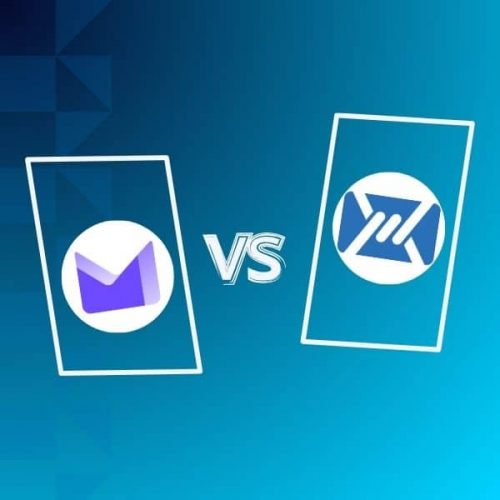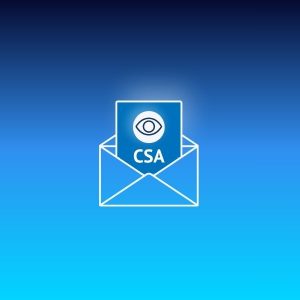Concerns around digital privacy and security have never been higher. And if you’re still using Gmail and Google products in general, it’s time for you to switch. That is why we made this Proton Mail vs Mailfence comparison guide: to help you make the best choice possible.
Both providers promise strong encryption, user privacy, and independence from Big Tech surveillance. But which one truly delivers the best value?
We’ll break down the differences between Proton Mail vs Mailfence across pricing, features, privacy policies, and more. Let’s explore.
Want to compare more providers? See how Mailfence stacks up against 9 other private email services in our complete guide of the 10 best secure email providers, including detailed security scores and pricing.
About Proton Mail and Mailfence
Proton Mail and Mailfence are two of the most recognized privacy-first email services on the market. Both providers cater to users who are sick of Gmail/Yahoo’s tracking and advertising model. However, while they share similar values, their approaches and feature sets vary significantly.
Proton Mail is a Switzerland-based email provider known for its end-to-end encryption and open-source software. It markets itself primarily on its privacy stance and provides tools like Proton VPN and Proton Drive in its broader ecosystem.
Mailfence is headquartered in Belgium: only a valid Belgian court order can force them to release data. They have no foreign parent company, meaning they are not liable to US gag orders or NSL’s. Belgium benefits from strong privacy legislation, such as GDPR.
Pricing Comparison
Understanding how each provider structures its pricing can reveal a lot about the value offered.
Both providers offer a free plan, however both plans have their limitations, which is why it’s often recommended to take a premium plan (especially if you want to support companies that don’t rely on surveillance capitalism).
Proton Mail’s first premium plan starts at 3.99 EUR / month (Mail Plus), while Mailfence’s starts at 2.5 EUR / month (Base).
Proton’s next premium plan is priced at 9.99 EUR / month (Proton Unlimited), but Mailfence offers the Entry plan at 3.50 EUR / month (Entry).
Mailfence offers more granular plans that scale with user needs, and its collaborative tools are included at all levels. The reason why Proton Mail’s plans are so expensive is that all its products are bundled together (VPN, Pass, Wallet, etc.), even if you don’t need them.
With Mailfence, you only pay for what you need.
For cost-sensitive users, Mailfence offers more affordable plans without compromising on any of its privacy and security features.
| Mailfence | Price | Proton Mail | Price |
|---|---|---|---|
| Free | 0 EUR / month | Free | 0 EUR / month |
| Base | 2.5 EUR / month | Mail Plus | 3.99 EUR / month |
| Entry | 3.5 EUR / month | Proton Unlimited | 9.99 EUR / month |
| Pro | 9.5 EUR / month | Proton Duo | 14.99 EUR / month |
| Ultra | 29 EUR / month | Proton Family | 23.99 EUR / month |
Proton Mail vs Mailfence: Feature Comparison
Both Proton Mail and Mailfence offer essential privacy-first features like end-to-end encryption, two-factor authentication (2FA), and secure server hosting. But let’s dive a bit deeper into what sets them apart.
Email and Encryption
Proton Mail offers end-to-end encrypted email by default between Proton users, with OpenPGP compatibility for external contacts. It also includes features like expiring messages and self-destructing emails.
Mailfence also provides full OpenPGP support, including the ability to sign, encrypt, and decrypt messages natively within the interface and password encrypted emails. From this standpoint, both solutions are quite comparable.
However, Mailfence goes one step further when it comes to key management by providing an integrated keystore.
The keystore is a place in your account dedicated to OpenPGP key generation and management. It is completely independent from any third-party add-on or plug-in. You can easily generate and import existing OpenPGP key pairs.
Proton handles key generation, storage, and rotation automatically. Users have limited control.
In summary:
- Mailfence prioritizes user autonomy and transparency. It’s built for users who want to fully control their cryptographic keys, manage trust levels, and ensure end-to-end compatibility with external users and organizations.
- Proton Mail prioritizes ease of use and automation. It simplifies encryption for the average user but sacrifices flexibility and visibility for those who want full cryptographic control.
Integrated Collaboration Tools
Mailfence takes a significant lead in collaborative functionality. It goes beyond secure email to offer group functionalities that include shared inboxes, shared calendars, and document workspaces, enabling real-time collaboration:
- Calendars with event sharing, group invites, and polling for meeting planning.
- Document storage and sharing capabilities with granular access control.
- Contact management with group-level sharing features.
All features are included in one, easy-to-use mobile app available on both iOS and Android. Proton Mail, by contrast, offers its email solution alongside standalone apps for calendar and drive. These tools exist in the broader Proton ecosystem but are not deeply integrated in a way that enables seamless collaboration between users or teams.
For example, Proton Drive files can be shared via link, but they don’t support real-time co-editing within groups.
Calendar comparison
| Feature | Mailfence | Proton |
|---|---|---|
| Group Calendar | ✅ | ❌ |
| CalDAV support | ✅ | ❌ |
| iTIP/ iMIP support | ✅ | ❌ |
| Mobile Sync support | ✅ | ❌ |
| Obtain Calendar by SMS | ✅ | ❌ |
| Polls (Doodle-like) | ✅ | ❌ |
| Standalone mobile app | ❌ (all-in-one app) | ✅ |
| Default notifications per calendar | ❌ | ✅ |
Document comparison
| Feature | Mailfence | Proton |
|---|---|---|
| Group Documents | ✅ | ❌ |
| WebDAV Access | ✅ | ❌ |
| File Link Sharing | ✅ | ✅ |
| Public Sharing | ✅ | ✅ |
| WebDAV/SMB Client | ✅ | ❌ |
| Tags | ✅ | ❌ |
Contacts comparison
| Feature | Mailfence | Proton |
|---|---|---|
| Group Contacts | ✅ | ❌ |
| CardDAV Syncronisation | ✅ | ❌ |
| Tags | ✅ | ❌ |
| Comments | ✅ | ❌ |
Interoperability
A key differentiator between Mailfence and Proton Mail is their approach to interoperability with standard internet protocols.
Mailfence is designed with open standards in mind. It supports:
- IMAP and POP: Easily access your Mailfence account through any standard email client such as Outlook, Thunderbird and Apple Mail.
- CalDAV and CardDAV: Synchronize calendars and contacts with applications like Thunderbird, Apple Mail, Outlook, and others.
- WebDAV: Lets users open and edit files directly on the server, eliminating the need to download, modify and reupload them.
This makes Mailfence highly adaptable and suitable for users who rely on third-party apps or prefer to integrate their secure communications into existing workflows.
Proton Mail, on the other hand, limits interoperability:
- Proton does not natively support IMAP/SMTP or CalDAV/CardDAV protocols.
- To use Proton Mail in external email clients, you must install a Proton Mail Bridge application.
- Proton’s Calendar and Drive also rely on proprietary interfaces, limiting their usage outside Proton’s ecosystem.
This closed approach can hinder flexibility for users who need seamless integration across devices and software platforms. Additionally, even with the Proton Mail Bridge, the only email clients that are supported are Outlook, Thunderbird, and Apple Mail.
User Roles and Shared Inboxes
More generally, Mailfence offers group management tools that allow multiple users to manage a shared inbox, delegate responsibilities, and maintain transparency within a team setting.
This is ideal for organizations looking to replace Big Tech-based group email systems.
Proton Mail includes administrative controls mainly for billing and user provisioning, but lacks the advanced shared inbox or collaborative team workflows found in Mailfence.
Proton Mail vs Mailfence: Wrap-Up
In essence, while Proton Mail presents a strong privacy-centric product ecosystem, Mailfence combines this with a productivity-focused architecture. This allows users not just to communicate securely, but also to collaborate efficiently. For professionals, small or medium-sized organizations, NGOs, and privacy-conscious individuals, Mailfence stands out as a more capable and integrated solution with better support for open standards.
Create your free account today, and join the fight for online privacy!



